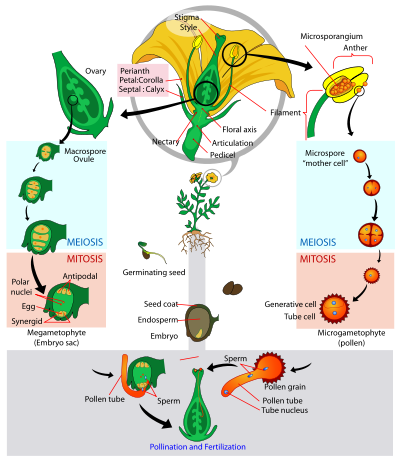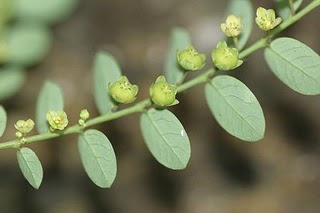
Reproduction
Like all plants, P. niruri undergoes an alternation of generations. Stonebreaker has a dominant sporophyte (diploid) stage in its lifecycle, while the gametophyte stage (haploid) is reduced. The flowers of Stonebreaker are monoecious meaning both the male and female parts are on the same plant. In addition, Phyllanthus niruri contains microspores, which are gametophytes that will develop into pollen grains (sperm) through meiosis. It also has megaspores that will develop into the female parts through meiosis as well. On the anther of each flower, the microsporangium develops microspores that get transported to the ovule in the megasporangium either by wind pollination or cross-pollination with insects.
After pollination, the two
gametophytes fuse together and form a diploid zygote. The zygote
develops into an embryo which is packaged inside a seed with a
food supply. When the seed finally germinates, the embry o will
undergo mitosis until P. niruri reaches adulthood.
o will
undergo mitosis until P. niruri reaches adulthood.
Now that you know how Stonebreaker reproduces, let’s learn some interesting facts.